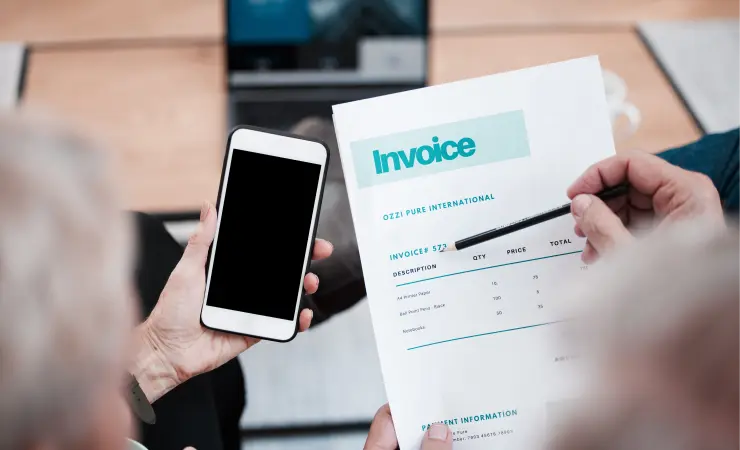- +91-9266850606
- info@cfomantra.com
- Pitam Pura, New Delhi
- +91-9266850606
- info@cfomantra.com
- Pitam Pura, New Delhi
Open and Closed Invoices Overview Software
An invoice is a document that requests payment in exchange for a service. In
general, there are two types of invoices: open invoices and closed invoices. The
open and closed invoices overview software will be an ideal choice for
organizations because it will optimize transaction processing, enhance customers'
experiences, and improve efficiency.

What is an open invoice?
A vendor sends an open invoice, also known as an outstanding invoice, to a client
but does not receive payment. Until it receives payment, the customer will record
the open invoice in their accounts.
For an organization’s accounting cycle, open invoices are important. They do so
because they help track cash flow and monitor which customers owe payments.
An open invoice refers to a type of bill that has special information, such as the
following:
- Invoice number
- PO number
- A description of the goods purchased
- Date when the invoice is created
- The name and address of the payer and payee are provided.
- The total number of goods or services
- Terms and directions of the payment
How Does an Open Invoice Work?
A vendor's accounts payable department will send an open invoice to the
customer who owes them money. The customer's accounting department will
ensure that the invoice is legitimate. Occasionally, the open invoice may include
past transactions and unpaid outstanding amounts.
If there are any discrepancies in the invoice, the customer’s accounting
department will give it back to the vendor for review. However, if it is accurate,
then the customer needs to pay it within the timeframe allotted.
If the open invoice does not get paid within the time given, it will move from an
open invoice to a past-due invoice. In the alternative scenario, timely payment
transforms the open invoice into a closed one. We will then accept the closed
invoice to complete the audit trail.
Contact Us
Common types of open invoices
There are various types of open invoices, with each having different priority
levels.
- Bills: When an open invoice is past due, it will be considered a bill. These will indicate issues, which could result in penalties or late fees for the specific customer.
- Online pending payments: An open invoice, also known as invoice automation, will automatically make the online payment using payment processing software. The payment processor can immediately check these low-risk payments.
- You can make these offline pending payments using cash, checks, or pending bank transfers. Offline pending payments, also known as manual payments. They take longer to process, and everyone has to manually check their payment status.
- Incomplete payments: These are the amounts that a customer has not made even after receiving their invoice. Incomplete payments can occur due to incorrect bank information or insufficient funds to cover the invoice. Therefore, it is important to monitor these invoices closely.

What is a closed invoice?
The vendor has made and processed a payment on a closed invoice. Once you
close an invoice, you cannot modify or edit it. Once you close an invoice, you
cannot make new postings or edit supplemental or transactional information.
However, once an invoice closes, you can post payments to it.
The AR management can use the close invoice feature to signal that they have
reviewed the invoice and are prepared to submit it to the client. There will be no
new charges or adjustments added to the closed invoice. There will be no reversal
of the close invoice action.
Common Types of Closed Invoices
Closed invoices may have different categories based on the nature of
transactions. Some common types include the following:
- A vendor or supplier issues a purchase invoice for services or goods purchased. The vendor or supplier will close the invoice after receiving the payment.
- Businesses generate a sales invoice when they sell goods or services to customers. Once the customer pays and confirms the payment, the sales invoice closes.
- Proforma Invoice: The proforma invoice serves as a preliminary invoice before the actual sales occur. Generally, it is used as a quotation or for customs purposes. Once issued and paid, the pro forma invoice will close.
- Debit Invoice: We issue this invoice when we need to charge additional amounts to a customer not included in the original invoice. We close the debit invoice once we receive the payment.
Transform Your Invoicing with Our Software
With our accounts billing software, the accuracy of financial data will increase,
ensuring compliance with internal and external regulations. Even for audits, the
organizations will maintain transparency and update financial records with
accuracy.
CFO Mantra will help organizations handle their open and closed invoicing
smoothly with their open and closed invoices overview software. To schedule a
demo, call +91-9911060601.
